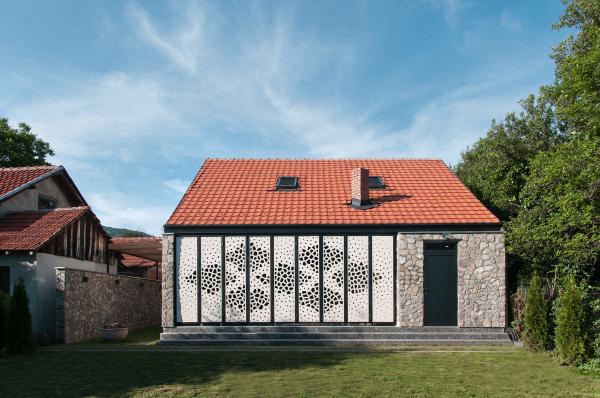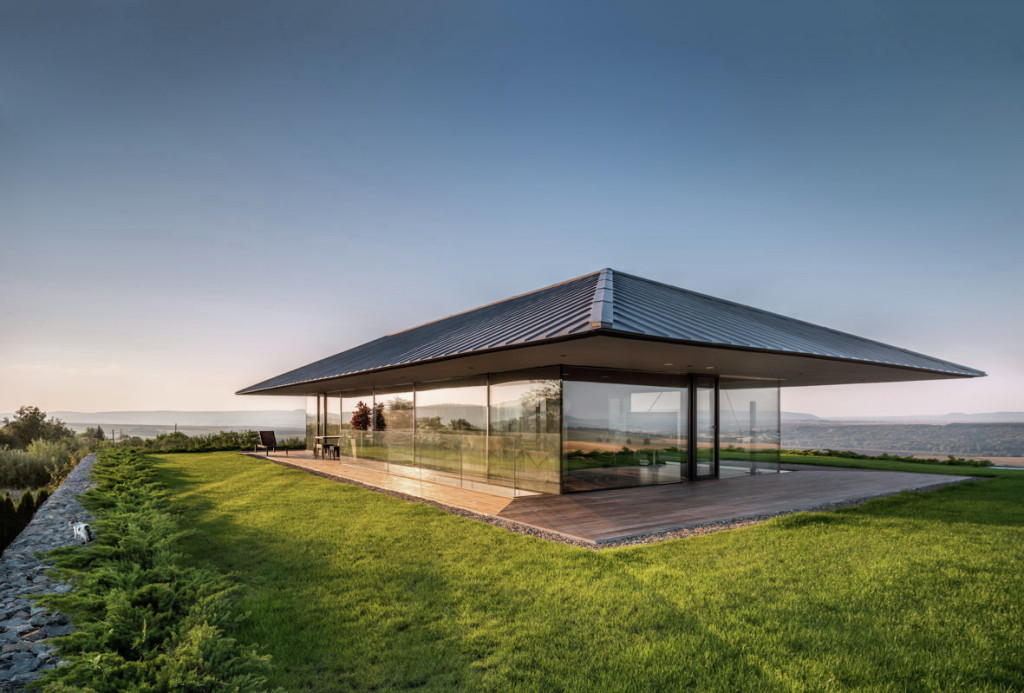Defining Balkan Architecture
Balkan architecture is a different and diverse blend of styles, mirroring the district’s rich history and social impacts. It is portrayed by a mix of Ottoman, Byzantine, and Mediterranean components, with a solid local accentuation on conventional materials and procedures.
Historical Significance
The Balkans have been a crossroads of civilizations for centuries, and its architecture reflects this rich tapestry of history. From the Roman ruins of Split to the Ottoman mosques of Istanbul, the Balkans are home to a wealth of architectural treasures.
Early Influences
Ottoman Empire
The Ottoman Empire had a profound impact on Balkan architecture, introducing new building techniques and styles. Ottoman mosques, hamams, and bridges are found throughout the region, and their distinctive domes and minarets can be seen from afar.
Byzantine Legacy
The Byzantine Empire also left a lasting legacy on Balkan architecture. Byzantine churches and cathedrals are known for their intricate mosaics and frescoes, and their influence can be seen in many Ottoman mosques as well.

The Diversity Quotient
Regional Distinctions
Balkan architecture is not monolithic, and there are significant regional distinctions. For example, the architecture of Bosnia and Herzegovina is heavily influenced by its Ottoman heritage, while the architecture of Slovenia reflects its Central European roots.
Cultural Impact
Balkan architecture is also influenced by the region’s diverse cultures. For example, the Ottoman mosques of Istanbul are decorated with intricate Islamic calligraphy, while the Byzantine churches of Greece are adorned with Orthodox icons.
Architectural Styles
Ottoman Influence
Ottoman architecture is portrayed by its utilization of vaults, minarets, and curves. Ottoman mosques are ordinarily worked around a focal patio, with an enormous vault over the request lobby. Ottoman showers (hamams) are likewise eminent for their intricate dome designs.
Byzantine Elements
Byzantine architecture is known for its utilization of mosaics, frescoes, and stained glass. Byzantine churches are regularly cruciform in shape, with a focal vault and four more modest arches at the corners.
Mediterranean Vibes
Numerous Balkan nations have a Mediterranean shoreline, and their architecture mirrors this impact. Mediterranean-style structures are portrayed by their whitewashed walls, red-tiled rooftops, and angled windows and entryways.
Iconic Landmarks
Hagia Sophia, Istanbul
The Hagia Sophia is quite possibly of the most notable milestone in the Balkans, and it is a work of art of Byzantine architecture. It was implicit the sixth 100 years as a Christian church, however it was changed over into a mosque after the Ottoman success of Constantinople in 1453. Today, a historical center is available to guests, all things considered.
Mostar Bridge, Bosnia
The Mostar Extension is an UNESCO World Legacy Site and quite possibly of the most popular milestone in Bosnia and Herzegovina. It was inherent the sixteenth hundred years by the Ottomans, and it is a wonderful illustration of Ottoman scaffold architecture. The scaffold was annihilated during the Bosnian Conflict during the 1990s, however it was remade in 2004.
St. Sava Sanctuary, Serbia
The St. Sava Sanctuary is the biggest Universal church in the Balkans, and it is one of the biggest Customary holy places on the planet. It is situated in Belgrade, Serbia, and it is committed to Holy person Sava, the benefactor holy person of Serbia. The congregation was inherent the twentieth 100 years, and it is a fine illustration of Serbian Conventional architecture.
Materials and Techniques
Stone and Brick
Stone and brick are the most well-known materials utilized in Balkan architecture. Stone is commonly utilized for the outside of structures, while block is utilized for the inside.
Ornate Detailing
Balkan architecture is known for its luxurious enumerating. This should be visible in the multifaceted carvings on Ottoman mosques, the mosaics and frescoes in Byzantine temples, and the brilliant tiles on Mediterranean-style structures.
Frescoes and Mosaics
Frescoes and mosaics are two of the most common forms of decoration in Balkan architecture. Frescoes are wall paintings that are applied to wet plaster, while mosaics are made from small pieces of colored glass or stone.
Resilience and Adaptation
Post-War Reconstruction
The Balkans have encountered various conflicts and clashes over now is the right time. This has brought about the obliteration of numerous structures and architecture tourist spots. Nonetheless, the locale has a long history of strength and variation, and a large number of these milestones have been modified and reestablished.
Modern Interpretations
Balkan architects are also incorporating modern elements into their architectures. This can be seen in the use of new materials and construction techniques, as well as in the architecture of innovative new buildings.
Cultural Symbolism
Religion and Spirituality
Religion and spirituality assume a significant part in Balkan culture, and this is reflected in its architecture. Large numbers of the district’s most notable tourist spots are strict structures, like the Hagia Sophia in Istanbul, the St. Sava Sanctuary in Belgrade, and the Gračanica Cloister in Kosovo.
Unity and Identity
Balkan architecture is also a symbol of the region’s unity and identity. Despite its diversity, the Balkans share a common architectural heritage. This heritage is a source of pride for many Balkan people, and it is a reminder of the region’s shared history and culture.
Contemporary Challenges
Preservation Efforts
The Balkans is a home to an abundance of architecture treasures, however a considerable lot of these structures are at risk for rot. This is because of various variables, including war, financial difficulty, and an absence of consciousness of the significance of structural protection.
Urban Development
Another challenge confronting Balkan architecture is metropolitan turn of events. Numerous Balkan urban communities are going through quick turn of events, and this has prompted the destruction of numerous memorable structures. Finding a harmony between metropolitan turn of events and the safeguarding of the region’s architectural heritage is significant.

Balkan Architecture in Pop Culture
Film and Literature
Balkan architecture has been highlighted in various movies and works of writing. For instance, the Mostar Extension in Bosnia and Herzegovina is highlighted in the film “The Scaffold on the Drina.” The Hagia Sophia in Istanbul is highlighted in the book “The Name of the Rose.”
Tourism Boost
Balkan architecture is likewise a significant vacation spot. Numerous guests to the district are attracted to its notorious milestones, like the Hagia Sophia in Istanbul and the St. Sava Sanctuary in Belgrade. Balkan architecture is an important resource for the district’s travel industry.
Architectural Innovations
Sustainability
Balkan architects are increasingly incorporating sustainable elements into their architectures. For example, many new buildings in the region are using green building materials and renewable energy sources.
Integration of Technology
Balkan architects are also integrating technology into their architectures. For example, some new buildings in the region are using smart building technology to reduce energy consumption and improve efficiency.
Aesthetic Appeal
Color Palette
Balkan architecture is known for its energetic variety range. Numerous structures in the district are painted in splendid varieties, like white, blue, yellow, and red. This makes a happy and welcoming climate.
Landscaping
Landscaping assumes a significant part in Balkan architecture. Many buildings in the locale are encircled by lush gardens and courtyards. This makes a feeling of concordance between the normal world and the constructed climate.
Beyond Aesthetics
Functionality
Balkan architecture isn’t just stylishly satisfying, yet it is likewise utilitarian. Structures in the district are normally intended to be agreeable and decent, even in outrageous weather patterns.
Livability
Numerous Balkan structures are intended to advance bearableness. This is apparent in the utilization of normal materials, for example, stone and wood, which help to manage the temperature inside structures. Moreover, numerous Balkan structures are planned with highlights like overhangs, yards, and nurseries, which give inhabitants valuable chances to partake in the outside.
Summary
Key Takeaways
- Balkan architecture is a different and varied blend of styles, mirroring the district’s rich history and social impacts.
- Balkan architecture is portrayed by a mix of Ottoman, Byzantine, and Mediterranean components, with a solid territorial accentuation on customary materials and methods.
- Balkan architecture is an image of the district’s solidarity and personality.
- Balkan architects are incorporating sustainable elements and technology into their designs.
- Balkan architecture has had a significant impact on world architecture and has been influenced by other cultures.
Unique Charms of Balkan Architecture
Balkan architecture has various remarkable charms that make it stand apart from other building styles. These charms include:
- Its vibrant color palette
- Its use of natural materials
- Its focus on livability
- Its blend of different cultural influences
- Its resilience and adaptability
Balkan architecture is an important resource for the district and a wellspring of pride for the majority Balkan individuals. A one of a kind and lovely architecture style makes certain to proceed to develop and move in the years to come.
FAQS
What is Balkan architecture, and where can we find it?
Balkan architecture refers to the distinct building styles and designs prevalent in the Balkan Peninsula, a region in Southeastern Europe. It incorporates various structural impacts, including Ottoman, Byzantine, and Slavic, which have formed the development and plan of structures all through the area. You can find instances of Balkan architecture in nations like Greece, Bulgaria, Serbia, Croatia, and Albania, each offering its own mix of impacts and attributes.
What are some common features of Balkan architecture?
Balkan architecture is known for its diversity, but some common features include: Red-Tiled Rooftops: Numerous Balkan structures highlight red-tiled rooftops, adding a hint of warmth and character to the scene. Whitewashed Walls: Brilliant, whitewashed walls are frequently used to mirror major areas of strength for the of the locale and make an outwardly hitting diverge from the general climate.

